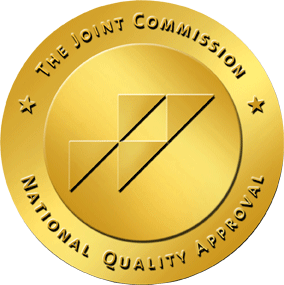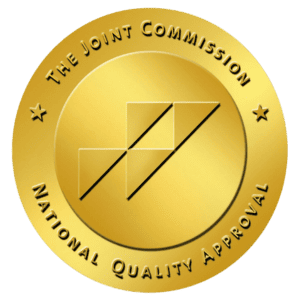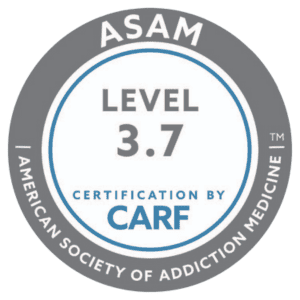Although suboxone is a common opioid addiction treatment option, this medication is not without risks. People with substance use disorder who are prescribed suboxone should be aware of the suboxone side effects, including dependence and addiction.
If you’re addicted to opioids like heroin, fentanyl, morphine, or oxycodone, your care team may recommend a combination of therapy and medication. One common medication used to help people recover from opioid addiction is suboxone. Medication-assisted treatment (MAT) using suboxone has a high success rate. Treatment plans that combine medication and therapy can reduce the risk of relapse or overdose.
What Is Suboxone?
Suboxone is a prescription medication that contains a combination of buprenorphine and naloxone. Buprenorphine is an opioid partial agonist that offers several benefits for treating opioid use disorder. Buprenorphine can reduce cravings and other withdrawal symptoms. Naloxone is a medication that blocks the effects of opioids. This medication can also reverse an opioid overdose.
Suboxone is available as a tablet that dissolves under your tongue. You can also get it as a film that you place between your cheek and teeth. Patients should follow their doctor’s instructions exactly. Taking more suboxone than prescribed or taking it for a longer period than prescribed can lead to addiction and overdose. Using other opioids while taking suboxone increases the risk of addiction or overdose.
Signs of Suboxone Addiction
Suboxone addiction isn’t always apparent. Family and friends of someone undergoing treatment with suboxone can watch for these warning signs of suboxone addiction:
- Taking more suboxone than prescribed
- Using suboxone for a longer period than prescribed
- Inability to cut down or stop taking suboxone
- Expressing a strong desire to take suboxone
- Neglecting responsibilities to family, work, or school
- Taking suboxone while driving
- Increasing tolerance
If you notice that suboxone is taking over your life, you can talk to your doctor or another addiction treatment professional about how to stop it.
Side Effects of Using Suboxone
Although suboxone offers many benefits, patients should expect to experience some side effects. When using suboxone as prescribed, you may experience mild to moderate side effects that include headache, dizziness, constipation, stomach pain, and trouble sleeping.
You also may experience back pain, diarrhea, sneezing, or a runny nose. If you experience hives, trouble breathing, confusion, blurred vision, or slurred speech, this may be a sign that you’re having an allergic reaction. Contact your doctor or seek emergency help immediately.
Symptoms of Suboxone Addiction
Suboxone is a Schedule III prescription drug and a controlled substance. This classification means that although suboxone has valid medical uses, there is a risk of dependence and addiction. People taking suboxone should watch for these symptoms of suboxone addiction:
- Frequent dose increases
- Using suboxone with other drugs or alcohol
- Suboxone cravings
- Doctor shopping
- Weight loss or other changes in physical appearance
- Isolation from family and friends
- Withdrawal symptoms
Suboxone addiction can develop very quickly. While the amount of time it takes to become addicted varies, many people discover that they’ve developed a tolerance to suboxone after 7-10 days of use. Addiction can develop after just a few weeks of suboxone use. If you are concerned about suboxone addiction, an addiction professional can help you start on the road to recovery.

Dangers and Risks of Suboxone
Although suboxone can help patients who are recovering from opioid use disorder, patients should be aware of the dangers of using this medication. In addition to dependence and addiction, suboxone may cause respiratory problems in some patients. If you have a history of breathing problems, such as asthma or sleep apnea, suboxone can raise the risk of severe respiratory problems that can lead to death.
People with comorbid mental health conditions like bipolar disorder may experience increased symptoms after stopping suboxone. A case study showed that a patient with both bipolar disorder and substance use disorder developed psychosis when stopping suboxone.
Women who are pregnant or breastfeeding should not take suboxone. Suboxone can affect the newborn. Babies born to mothers taking suboxone may experience withdrawal symptoms, such as trouble feeding, respiratory distress, sleepiness, and irritability. Since suboxone passes through the breast milk in low amounts, breastfeeding infants may also be sleepier than normal.
How Does Suboxone Become Addictive?
One of the active ingredients in suboxone, buprenorphine, partially activates your brain’s opioid receptors. Because suboxone activates these receptors, there is a chance of developing dependence, though the risks are less than using opioids like heroin. Even when taking suboxone as prescribed, your body gets used to buprenorphine. You can become both physically and psychologically dependent.
Withdrawal and Detox from Suboxone
When you stop taking suboxone, you may experience withdrawal symptoms. These symptoms include:
- Hot and cold flashes
- Fatigue
- Muscle pain
- Sweating
- Trouble sleeping
- Nausea and diarrhea
- Changes in mood
This withdrawal can also include the uncommon symptom of psychosis. The first signs of suboxone withdrawal can begin with 6 to 12 hours of stopping suboxone. A detox program that involves supervision by a medical professional can help you taper off safely and comfortably. During the detox process, the patient will experience withdrawal symptoms as suboxone leaves their body.
Treatment for Suboxone Addiction
After the detox process, someone recovering from substance use disorder may remain in a rehab or inpatient program. These programs involve close monitoring 24 hours a day, seven days a week. Residents also attend group and individual counseling sessions.
If you select an outpatient treatment program, you can sleep at home while attending the program during the day. The care team may recommend up to five hours of therapy and other sessions daily, several days a week. These programs may include complementary treatments like twelve-step programs, support groups, art therapy, meditation, and yoga.
Recognizing that you have a problem with suboxone is the first step. Once you acknowledge the problem, you have many different treatment options. A trained, caring team of addiction specialists can help you regain your life. Call Vogue Recovery Center to start your journey to life free from addiction.

- https://www.cdc.gov/overdose-prevention/reversing-overdose/about-naloxone.html
- https://doi.org/10.2165/00003088-200544070-00001
- https://doi.org/10.1001/jamanetworkopen.2021.29409
- https://doi.org/10.26355/eurrev_202107_26248
- https://www.ncbi.nlm.nih.gov/books/NBK541393/
- https://www.ncbi.nlm.nih.gov/books/NBK526012/
- https://www.ncbi.nlm.nih.gov/books/NBK582609/

Medically Reviewed by Kelsey Jones, MS, LPC






